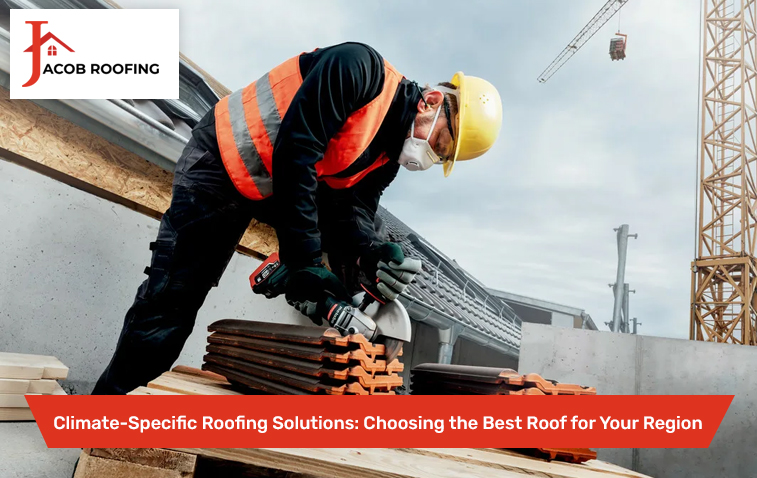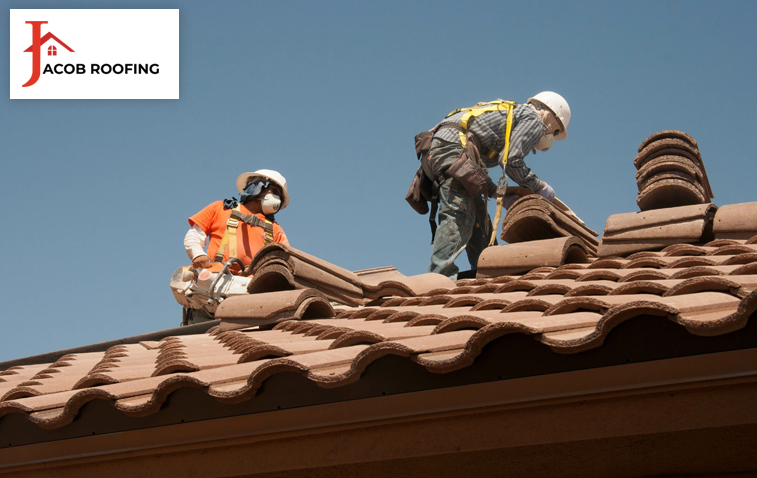Climate-Specific Roofing Solutions: Choosing the Best Roof for Your Region
The roof of a home is more than just a protective covering; it’s a crucial component that plays a vital role in energy efficiency, durability, and overall structural integrity. As climate patterns continue to evolve and extreme weather events become more frequent, the importance of selecting climate-specific roofing solutions has never been more critical. Each geographical area presents unique challenges to roofing materials, from intense heat and UV radiation in arid climates to heavy snowfall in colder regions and high humidity in tropical areas. The right roof can significantly impact a home’s energy consumption, longevity, and ability to withstand local weather conditions.
Moreover, as sustainability becomes an increasingly important consideration in construction, climate-appropriate roofing choices can contribute to reducing a building’s environmental footprint. This comprehensive guide explores various roofing solutions tailored to different climatic conditions, helping homeowners and builders make informed decisions that balance aesthetics, functionality, and regional suitability. By understanding the specific demands of your local climate, you can select a roofing system that not only protects your home but also enhances its performance and value in the long term.

Roofing for Hot and Arid Climates
In regions characterized by intense heat, low precipitation, and high UV exposure, roofing materials must be able to reflect sunlight and resist heat absorption to maintain a comfortable interior temperature.
Reflective Metal Roofing
Metal roofing, particularly those with reflective coatings, is an excellent choice for hot and arid climates. These roofs reflect a significant portion of the sun’s rays, reducing heat gain and keeping the home cooler.
Key benefits:
- High solar reflectance
- Excellent durability and longevity
- Low maintenance requirements
- Can be recycled at the end of its lifespan
Considerations:
- Proper insulation is crucial to prevent heat conduction
- Some designs may be noisy during rainstorms
Clay or Concrete Tiles
Traditional in many hot climates, clay and concrete tiles offer natural insulation properties and can withstand high temperatures without degrading.
Advantages:
- Natural thermal resistance
- Allows for air circulation beneath the tiles
- Available in various styles and colors
- Long lifespan
Considerations:
- Requires a sturdy roof structure due to weight
- May need periodic maintenance to prevent cracking
Cool Roof Coatings
For existing roofs, applying a cool roof coating can significantly improve heat reflection and energy efficiency.
Benefits:
- Can be applied to various roofing materials
- Reduces roof surface temperature by up to 50°F
- Extends the life of the underlying roofing material
- Can qualify for energy efficiency incentives
Roofing for Cold and Snowy Climates
In areas with harsh winters, heavy snowfall, and freeze-thaw cycles, roofs must be capable of supporting snow loads and preventing ice dam formation.
Steep-Slope Metal Roofing
Metal roofs with a steep pitch are highly effective in shedding snow and preventing ice dams.
Advantages:
- Excellent snow shedding capability
- Durable and resistant to cold temperatures
- Can last 50+ years with proper maintenance
- Available in various styles to complement different architectures
Considerations:
- Requires professional installation for proper performance
- May need snow guards to prevent sudden snow slides
Asphalt Shingles with Ice and Water Shield
High-quality asphalt shingles, combined with proper underlayment and ice and water shield, can provide effective protection in cold climates.
Key features:
- Cost-effective solution for many homeowners
- Wide variety of styles and colors available
- Ice and water shield prevents water infiltration from ice dams
- Can be reinforced for improved wind resistance
Considerations:
- Shorter lifespan compared to metal roofing
- Requires proper attic ventilation to prevent ice dam formation
Slate Roofing
Natural slate roofing is an excellent choice for cold climates due to its durability and resistance to freezing temperatures.
Benefits:
- Extremely long-lasting (100+ years)
- Naturally resistant to moisture and freezing
- Provides excellent insulation
- Adds significant value to the home
Considerations:
- Very heavy; requires a reinforced roof structure
- Higher initial investment compared to other options

Roofing for Humid and Tropical Climates
In tropical and humid regions, roofs must contend with high moisture levels, potential hurricane-force winds, and intense sun exposure.
Standing Seam Metal Roofing
Standing seam metal roofs are highly resistant to wind uplift and can withstand heavy rains common in tropical climates.
Advantages:
- Excellent water shedding capabilities
- High wind resistance
- Resistant to mold and mildew growth
- Can be coated for enhanced heat reflection
Considerations:
- Proper installation is crucial for optimal performance
- May require additional insulation in hot climates
Concrete or Clay Tiles with Enhanced Wind Resistance
Specially designed concrete or clay tiles can offer excellent protection in humid, hurricane-prone regions.
Key features:
- High wind resistance when properly installed
- Natural resistance to mold and algae growth
- Good thermal properties for hot climates
- Available in profiles that mimic traditional tropical styles
Considerations:
- Requires a sturdy roof structure due to weight
- May need periodic cleaning to prevent mold growth in highly humid areas
Green Roofing Systems
In tropical urban areas, green roofs can help mitigate the urban heat island effect while managing stormwater runoff.
Benefits:
- Excellent insulation properties
- Reduces stormwater runoff
- Can create additional usable space
- Improves air quality and biodiversity
Considerations:
- Requires specialized design and installation
- Needs regular maintenance to thrive
Roofing for Temperate Climates
Temperate regions experience a mix of weather conditions, requiring versatile roofing solutions that can handle various challenges throughout the year.
Composite Shingles
Advanced composite shingles offer a good balance of performance across different weather conditions.
Advantages:
- Resistant to UV radiation, moisture, and temperature fluctuations
- Available in styles that mimic wood or slate
- Lighter weight compared to natural materials
- Often come with comprehensive warranties
Considerations:
- Performance can vary significantly between brands and models
- May not have the same longevity as some natural materials
Wood Shakes or Shingles
In temperate climates with moderate conditions, wood roofing can provide natural beauty and good performance.
Benefits:
- Natural insulation properties
- Environmentally friendly when sourced sustainably
- Adds unique character to the home
- Can last 30+ years with proper maintenance
Considerations:
- Requires regular maintenance to prevent moss and mold growth
- May need fire-resistant treatments in some areas
Synthetic Slate
For homeowners desiring the look of slate without the weight, synthetic slate offers a viable alternative in temperate climates.
Key features:
- Mimics the appearance of natural slate
- Lighter weight, suitable for a wider range of structures
- Resistant to cracking and breaking
- Often made from recycled materials
Considerations:
- May not have the same longevity as natural slate
- Performance can vary between manufacturers
Conclusion
Selecting the right climate-specific roofing solutions is crucial for ensuring long-term performance, energy efficiency, and protection for your home. By considering the unique challenges posed by your local weather patterns – whether it’s intense heat, heavy snowfall, high humidity, or a mix of conditions – you can choose a roofing system that not only withstands these challenges but also enhances your home’s overall efficiency and comfort.
As climate patterns continue to evolve, investing in a climate-appropriate, energy-efficient roofing solution becomes increasingly important. Remember that while initial costs may vary, the long-term benefits of a well-chosen roof in terms of durability, energy savings, and home value can be substantial. Always consult with local roofing experts familiar with your specific regional conditions to ensure the best choice for your home.
